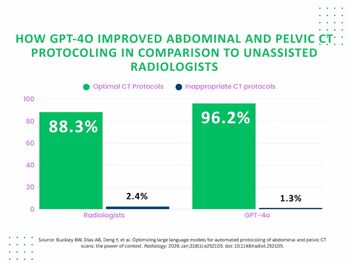
MRI Scans Reveal Further Evidence of Dementia Risk in World Trade Center First Responders
Responders who have cognitive impairment have reduced gray matter thickness in the brain consistent with neurodegenerative conditions.
First responders from the World Trade Center (WTC) are at risk for developing dementia, according to the results of MRI scans, new research has revealed.
Research presented July 28 at the Alzheimer’s Association International Conference by investigators from Stony Brook University shows that responders who show signs of cognitive impairment (CI) have neurological abnormalities that are similar to those seen in patients who have Alzheimer’s or related dementias.
“The environmental exposures and psychological pressures experienced by responders during 9-11 and its aftermath has had an insidious effect on their health and well-being,” said Benjamin Luft, M.D., director of the Stony Brook WTC Health and Wellness Program. “Now, nearly 2 years post 9-11, clinicians who care for these individuals are seeing more patients who are showing signs of cognitive disorders and possible dementia.”
These findings, he said, are the first to demonstrate that not only does this group have psychological problems, including post-traumatic stress disorder, but they are also at high-risk for neurodegenerative disorders. Given this revelation, he added, more research is critical.
Luft’s team, in concert with researchers at Ichan School of Medicine at Mount Sinai, originally published their imaging results in
This study was the first to use MRI to examine brain matter in WTC responders, Luft said. His team analyzed patients with CI symptoms, as well as those without to determine if any brain changes due to neurotoxin exposure at Ground Zero could be responsible for the development of CI in mid-life. Responders were between age 45 and 65 – an age range were cortical atrophy is rare in healthy individuals.
Using T1-weighted MRI imaging, investigators measured corticol thickness in the brain cortex of 99 responders. The scans revealed the cortex had atrophied in many of these patients compared to the control participants.
“While there are many reasons for cognitive decline because of brain changes, the loss of gray matter in the brain is one of the most concerning and can be measured by cortical thickness,” said Sean Clouston, Ph.D., lead study author and associate professor of family, population, and preventive medicine in Stonybrook’s public heath program. “We found a direct correlation between those suffering from cognitive impairment and cortical thickness, indicating a reduction in gray matter of the brain at levels consistent with neurodegenerative disease.”
Specifically, the researchers determined via scan analysis that cortical thickness was significantly reduced in 23 of 34 cortical regions, including the frontal, temporal, and occipital lobes, in participants who showed signs of CI. Additionally, comparisons to existing research revealed that responders with or without CI did have substantial reductions in cortical thickness in seven regions in or near the temporal lobe, potentially pointing to a population-level effect, the team said.
According to Clouston, the level of reduced cortical thickness present in the affected responders falls in line with patients who have dementia. Consequently, he explained, it could be an indicator of early-stage dementia, meaning early-onset could occur for some of the responders at mid-life. But, more longitudinal research and imaging is needed to determine what causes the brain atrophy and to identify whether these patients experience any progression over time.
Newsletter
Stay at the forefront of radiology with the Diagnostic Imaging newsletter, delivering the latest news, clinical insights, and imaging advancements for today’s radiologists.




























